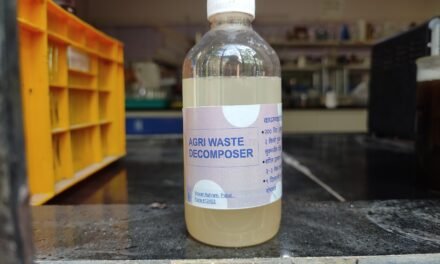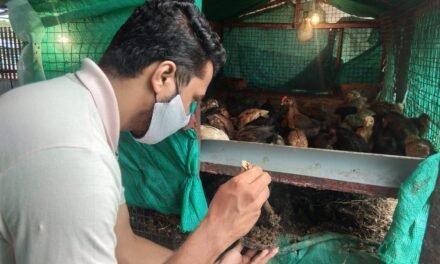Calculation of water holding capacity of leaves straw, bajara husk, sawdust.
I had assigned to work on water holding capacity.
Material collection: I had collected the dry leaves from Vigyan Ashram campus. Then I collected the bajara husk from the backyard of workshop. Then I went in the Pabal village for getting the sawdust and collected it from the Vakhar.
Pulvarizer: From this machine I had made the small form of leaves straw and bajara husk.
Procedure:
- Weighing all the three samples.
- Put the samples in three different sieves.
- Then Add the water upto saturation point.
- Then take the weight, through this weight exclude the weight of sieve.
- After excluding the weight then subtract the initial weight then we can get the weight of bound water.
Calculation:
1) Bajara husk:
Initial weight of sample= 50 gm
weight after addition of water+sieve= 716 gm
weight after addition of water-sieve= 716-414 = 302 gm
weight of bound water= (weight after addition of water – sieve) – initial weight = 302-50 = 252 gm
Formula:
Water holding capacity = (weight of bound water / initial weight of sample) x 100
= 252/50
= 504%
2) Leaves straw:
Initial weight of sample= 50 gm
weight after addition of water+sieve= 634 gm
weight after addition of water-sieve= 634-369 = 265 gm
weight of bound water= (weight after addition of water – sieve) – initial weight = 265-50 = 215 gm
Formula:
Water holding capacity = (weight of bound water / initial weight of sample) x 100
= 215/50
= 430%
3) Sawdust:
Initial weight of sample= 50 gm
weight after addition of water+sieve= 570 gm
weight after addition of water-sieve= 570-369 = 199 gm
weight of bound water= (weight after addition of water – sieve) – initial weight = 199-50 = 149 gm
Formula:
Water holding capacity = (weight of bound water / initial weight of sample) x 100
= 149/50
= 298%
| Sr. No | Material name | WHC (%) |
| 1 | Bajara husk | 504 |
| 2 | Leaves straw | 430 |
| 3 | Sawdust | 298 |
Result: From the above readings we can conclude that the Bajara husk had the highest water holding capacity.



